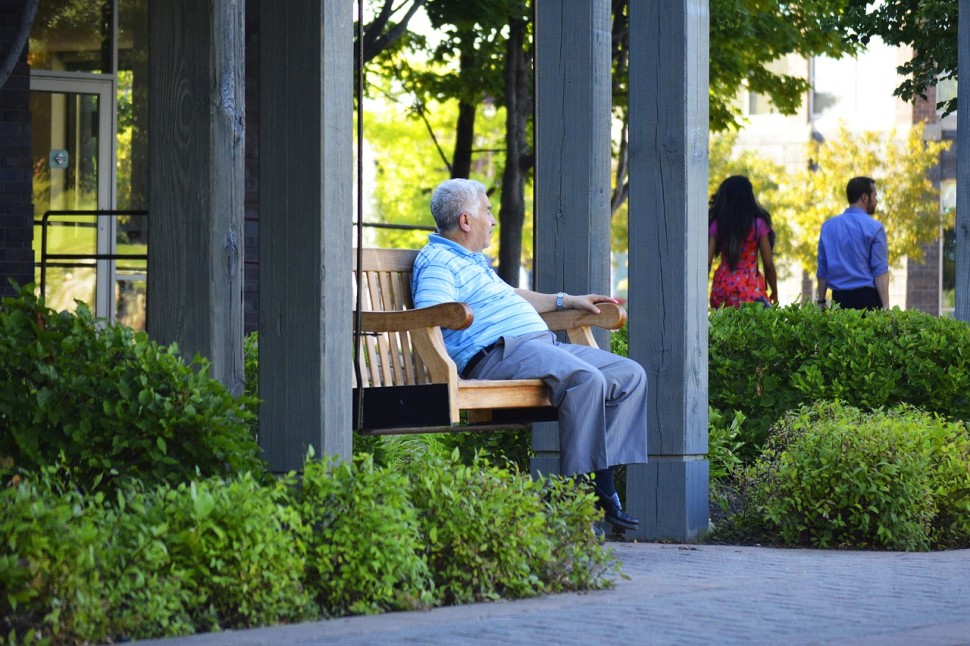A new study led by Northwestern University professor Hannes Schwandt is the first to show in fine detail the stark differences in life expectancy loss during the first two years of the COVID-19 pandemic between people living in high- and low-income census tracts in the U.S., and the disproportionate reduction in life expectancy — even within wealthy areas — for Hispanic, Black and Asian Californians.
The gap in life expectancy between the lowest- and highest-income census tracts in California grew from 11.5 to 15.5 years between 2019 and 2021, meaning that the lowest-income groups lost four years of life expectancy on top of a gap of more than a decade that had already existed before the pandemic.
The study, which was published July 7 in the Journal of the American Medical Association, found that life expectancy in California decreased from 81.4 years in 2019 to 79.2 years in 2020 and 78.4 years in 2021. It is one of the first studies to demonstrate that the reduction in life expectancy continued from 2020 into 2021, despite the availability of vaccines for much of 2021.
Co-authors included scholars from the University of California, Los Angeles, the California Policy Lab, the National Bureau of Economic Research, Princeton University and Virginia Commonwealth University.
“We’ve had indications that the pandemic affected economically disadvantaged people more strongly, but we never really had numbers on actual life expectancy loss across the income spectrum,” said Schwandt, an assistant professor in Northwestern’s School of Education and Social Policy and a faculty fellow at the University’s Institute for Policy Research. “I am shocked by how big the differences were, and the degree of inequality that they reflected.”
The COVID-19 pandemic has hit low-income and minority communities especially hard. Hispanic, Black and Asian Americans suffered a relatively larger increase in the income-related life expectancy gap compared to white Americans, according to the study, which examined data on all 1.99 million deaths that occurred in California between 2015 and 2021 to understand how the situation changed after the onset of the pandemic.
Hispanic populations in California lost 5.7 years of life expectancy between 2019 and 2021, while Black populations lost 3.8 years, Asian populations lost 3 years, and white populations lost 1.9 years, according to the study. During this time, income also became more tightly correlated with life expectancy than it had been previously.
In the areas where the richest one percent live, life expectancy loss was less than a year, while in the lowest income areas, four to five years of life expectancy were lost.
Life expectancy is not the average lifespan of individuals in a society, but a hypothetical measure based solely on the mortality rates observed in a given year. It estimates how long a cohort of newborns could expect to live if it experienced the mortality rates of that specific year throughout their entire lifetimes.
Life expectancy captures how much life was lost collectively within a population during the pandemic years and it illustrates the dramatic differences in death rates experienced during the pandemic by communities of different socio-economic status.
In the case of the COVID-19 pandemic, viral exposure tended to be higher for people with lower incomes, who often could not work remotely, may have relied more on public transportation, and often experienced more crowded housing conditions.
People of color and lower-income groups also have a higher prevalence of comorbid health conditions, reduced access to care, and more adverse social determinants of health, such as lower income to cushion economic stresses during the pandemic. Much of this inequality reflects the legacy of systemic racism, the authors wrote.
Schwandt noted that Hispanic Californians experienced higher life expectancy on average than white Californians before the pandemic, but that they nevertheless suffered a greater reduction in life expectancy such that their overall life expectancy became lower in 2020.
Asian Americans in California, who historically experienced the longest life expectancy of the four groups studied (Alaska Native and American Indian communities were excluded due to a small sample size in most census tracts), also suffered a greater decrease than white Americans. Black Americans continued to have the lowest life expectancy and suffered greater decreases than any group except Hispanic Americans.
“Life expectancy has always tended to be shorter for Americans on the lower rungs of the income ladder, but this study shows that the pandemic has put those vulnerable families at even greater risk,” said Dr. Steven Woolf, director emeritus of the Center on Society and Health at Virginia Commonwealth University and a professor in the Department of Family Medicine and Population Health at the VCU School of Medicine.
“Even in a state like California, where health is better than in much of the country, devastating losses in life expectancy occurred in low-income communities and the Latino population in particular,” he added.
In addition to Schwandt and Woolf, authors of the paper “Changes in the Relationship Between Income and Life Expectancy Before and During the COVID-19 Pandemic, California, 2015–2021,” include Janet Currie of Princeton University, Till von Wachter and Jonathan Kowarski of the University of California, Los Angeles and the California Policy Lab, and Derek Chapman of Virginia Commonwealth University.


